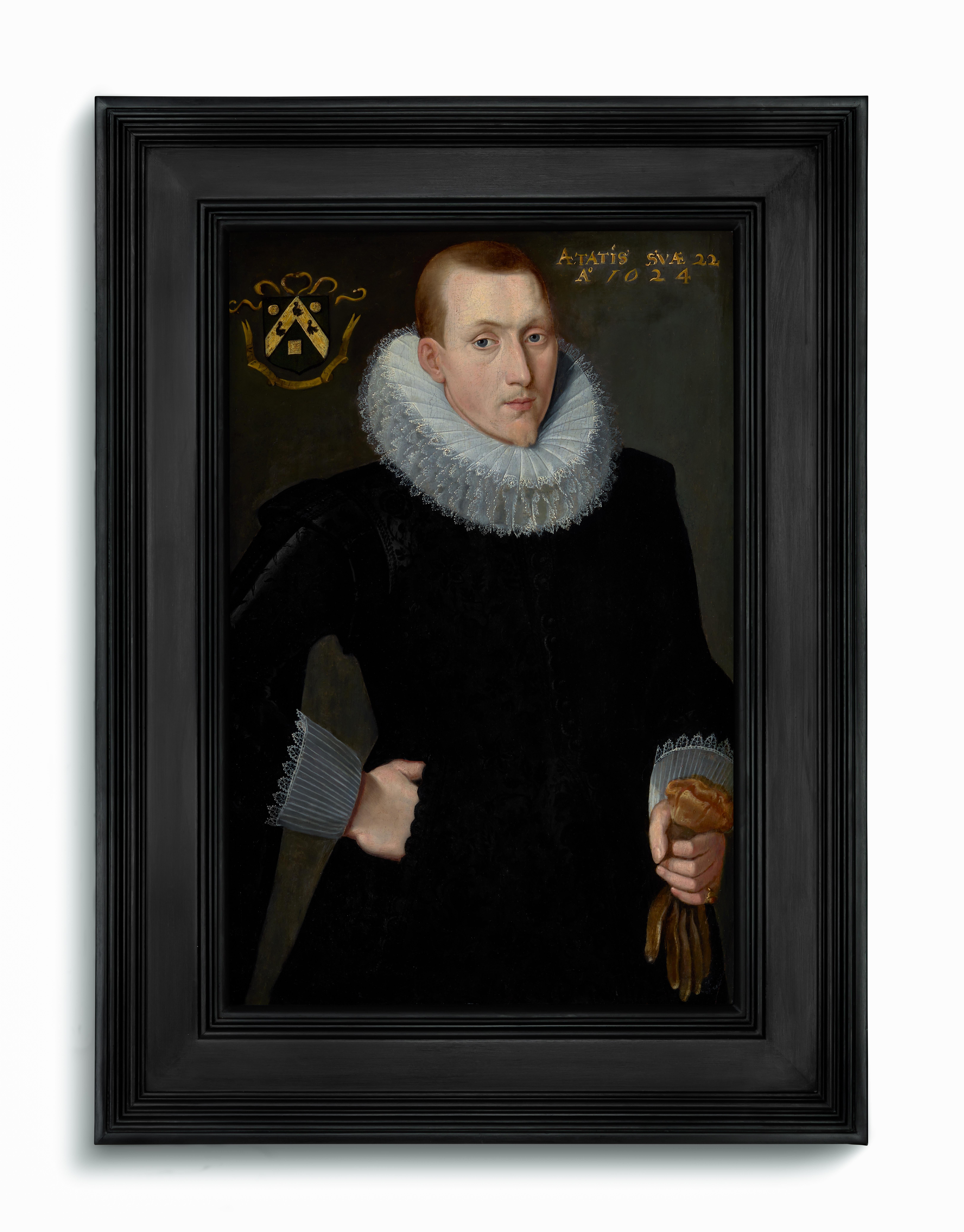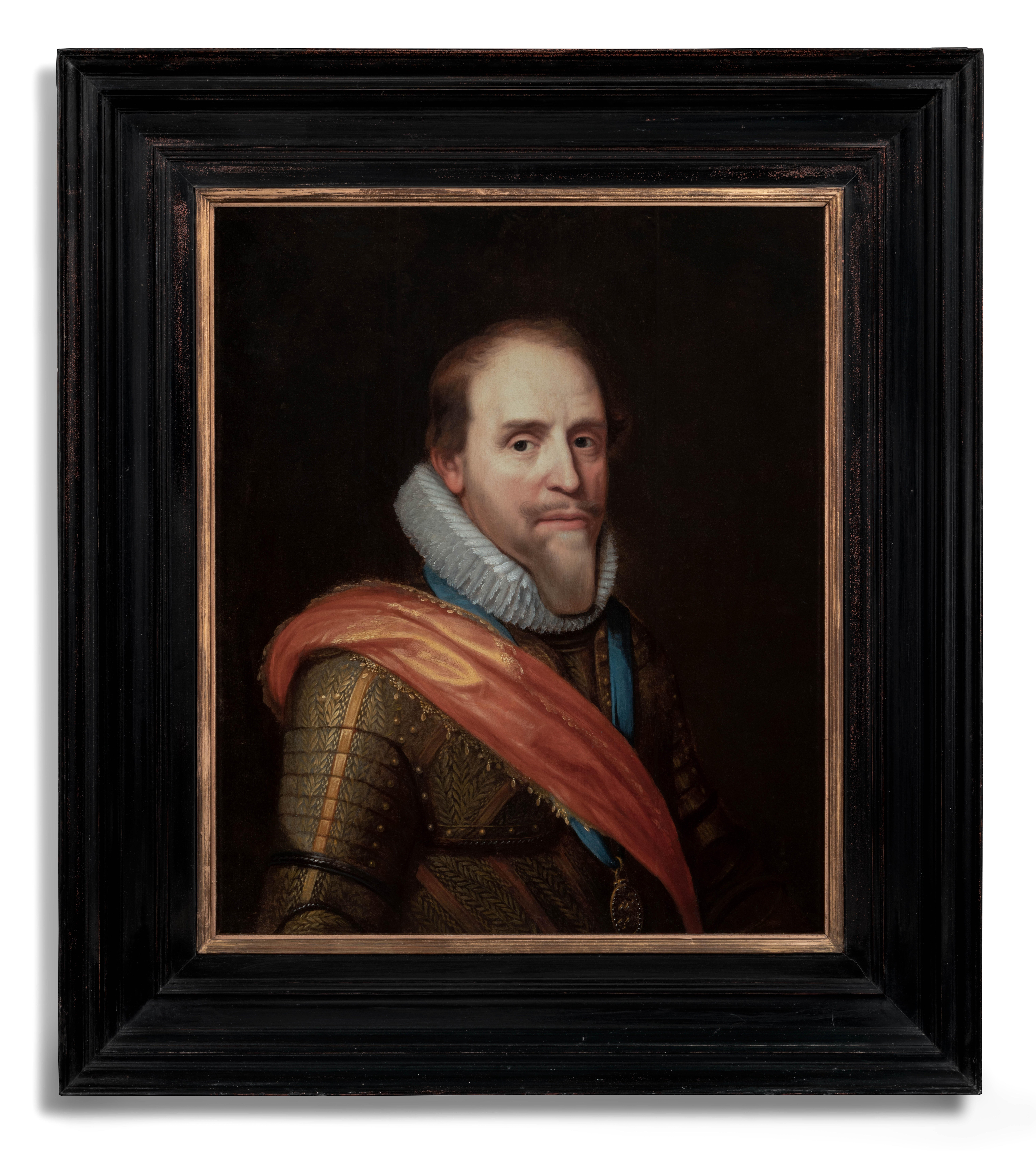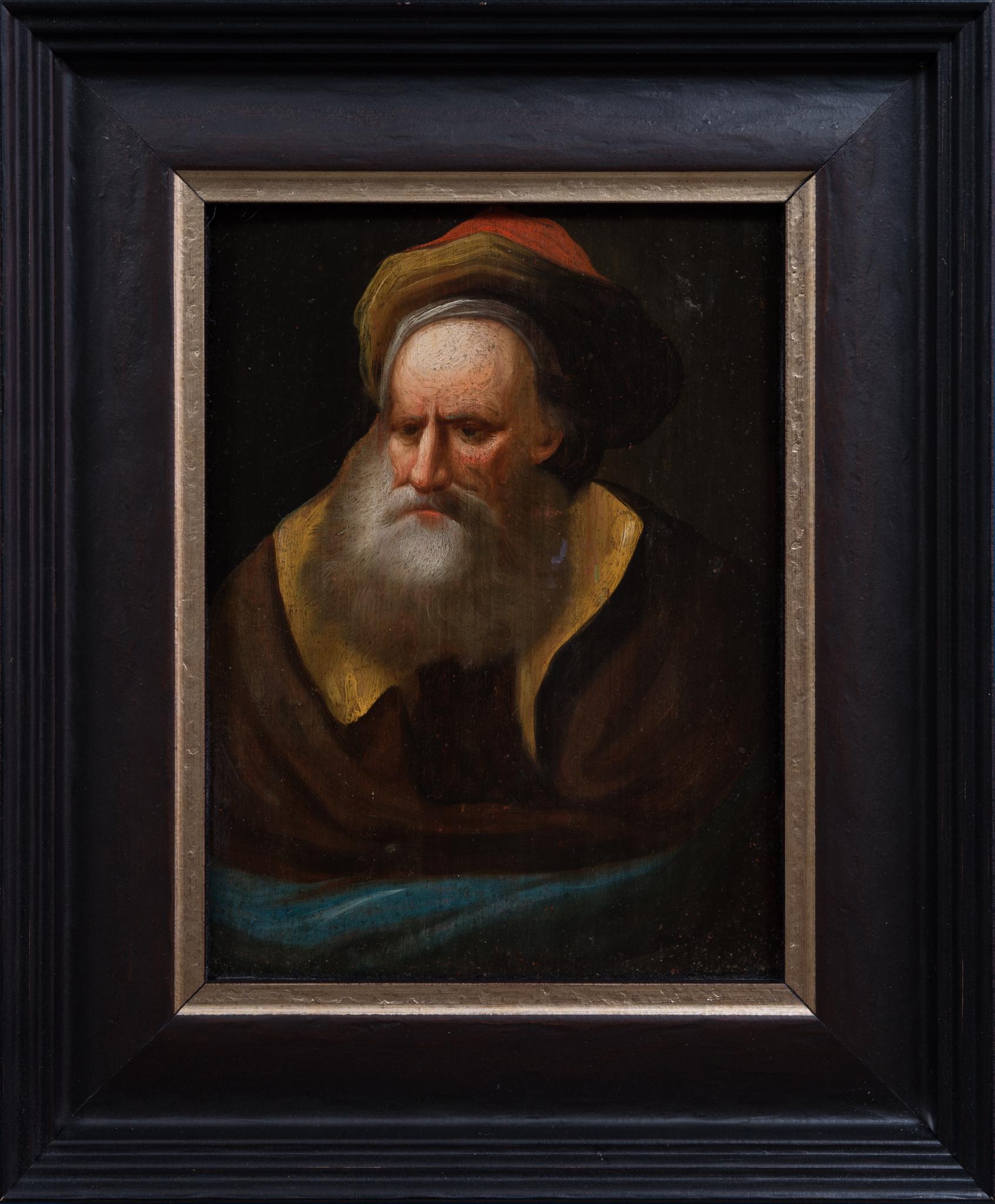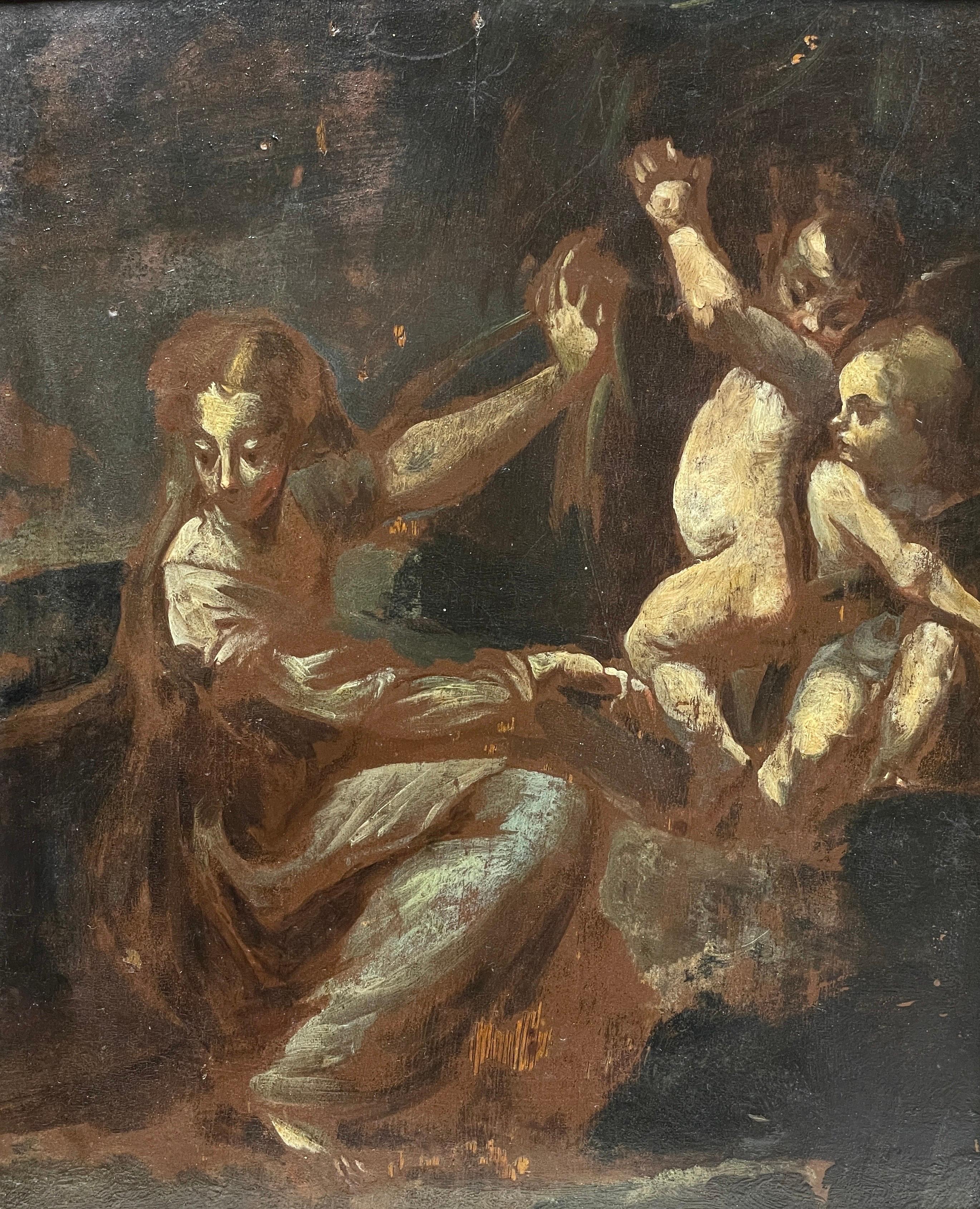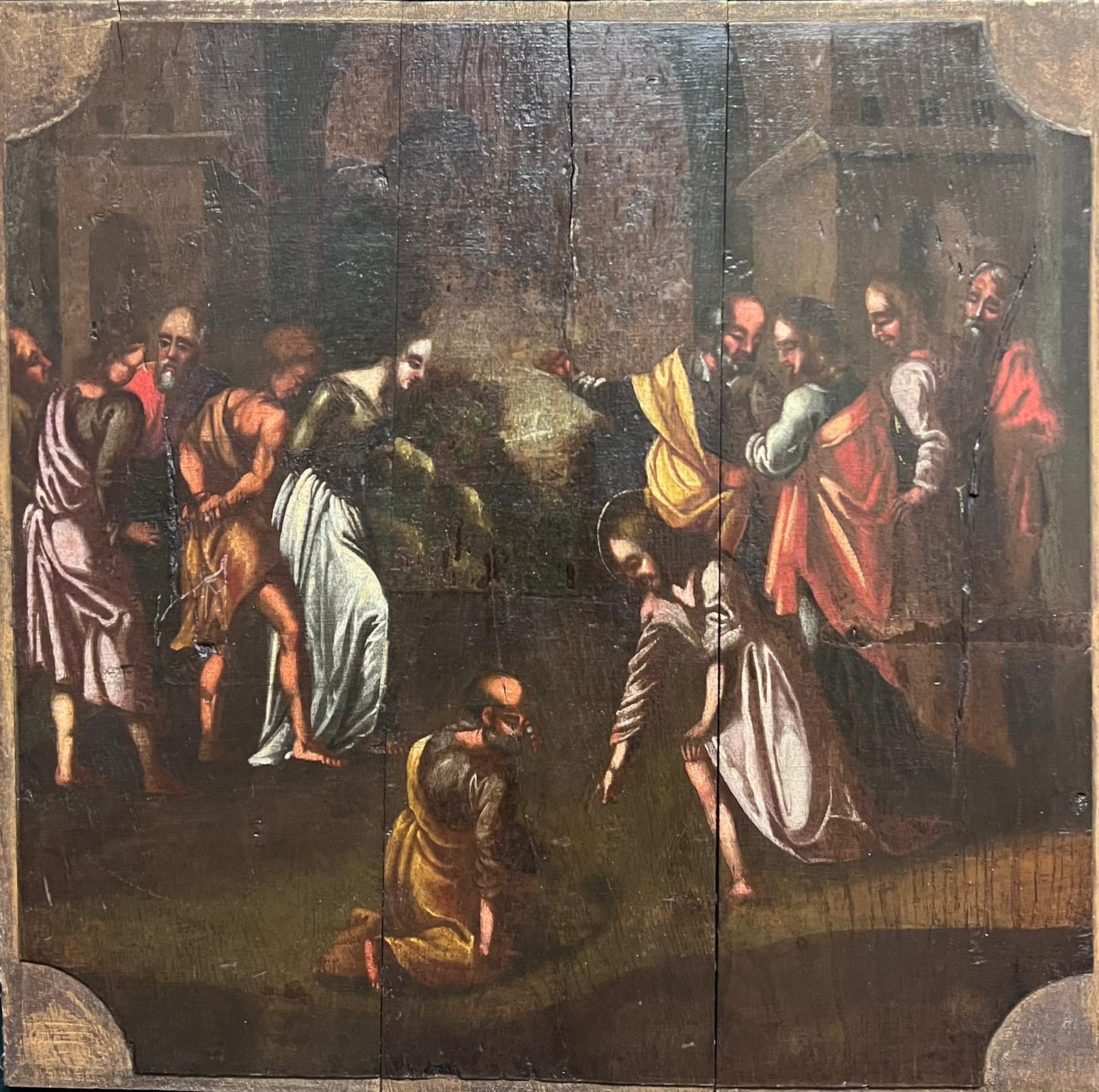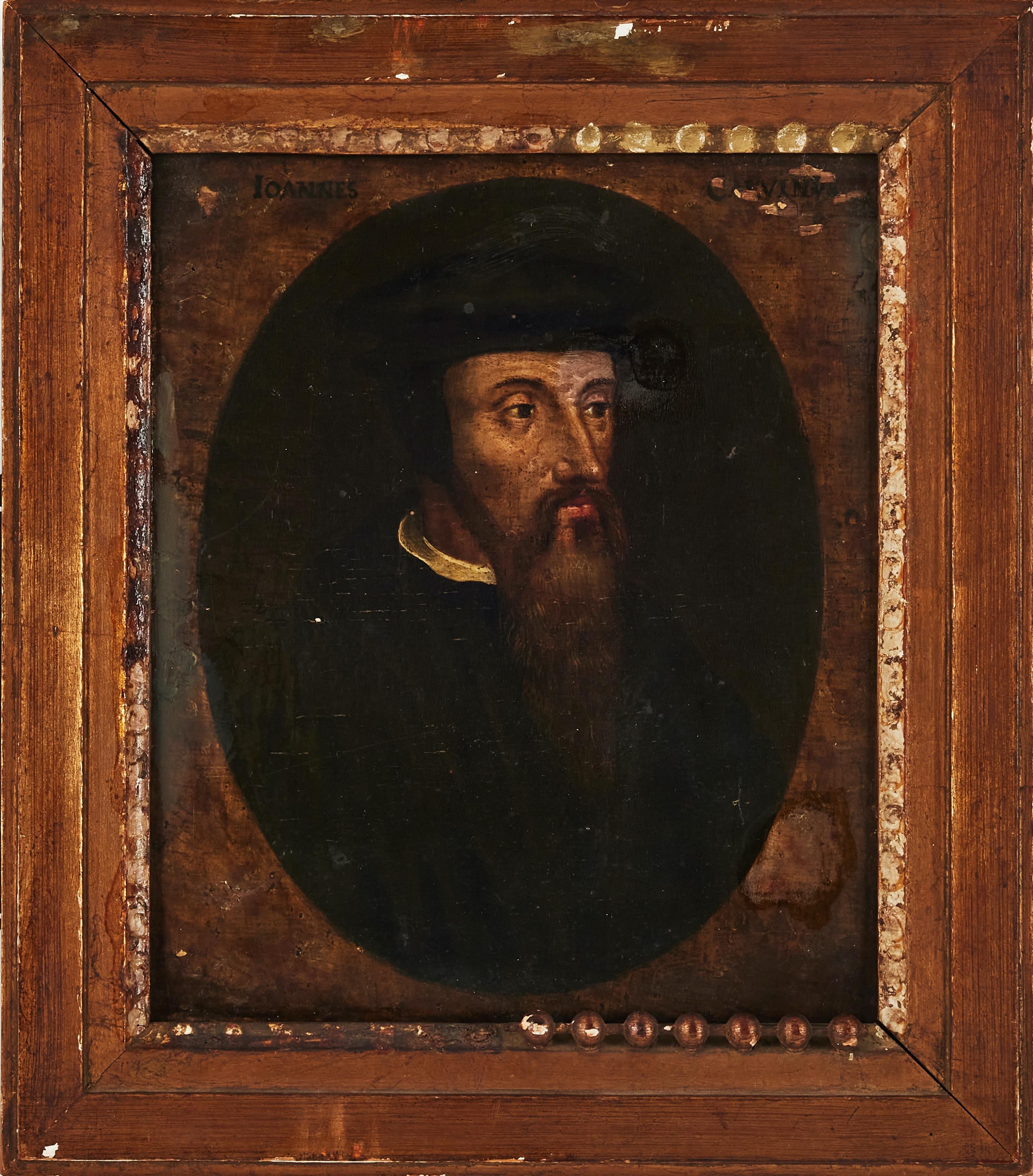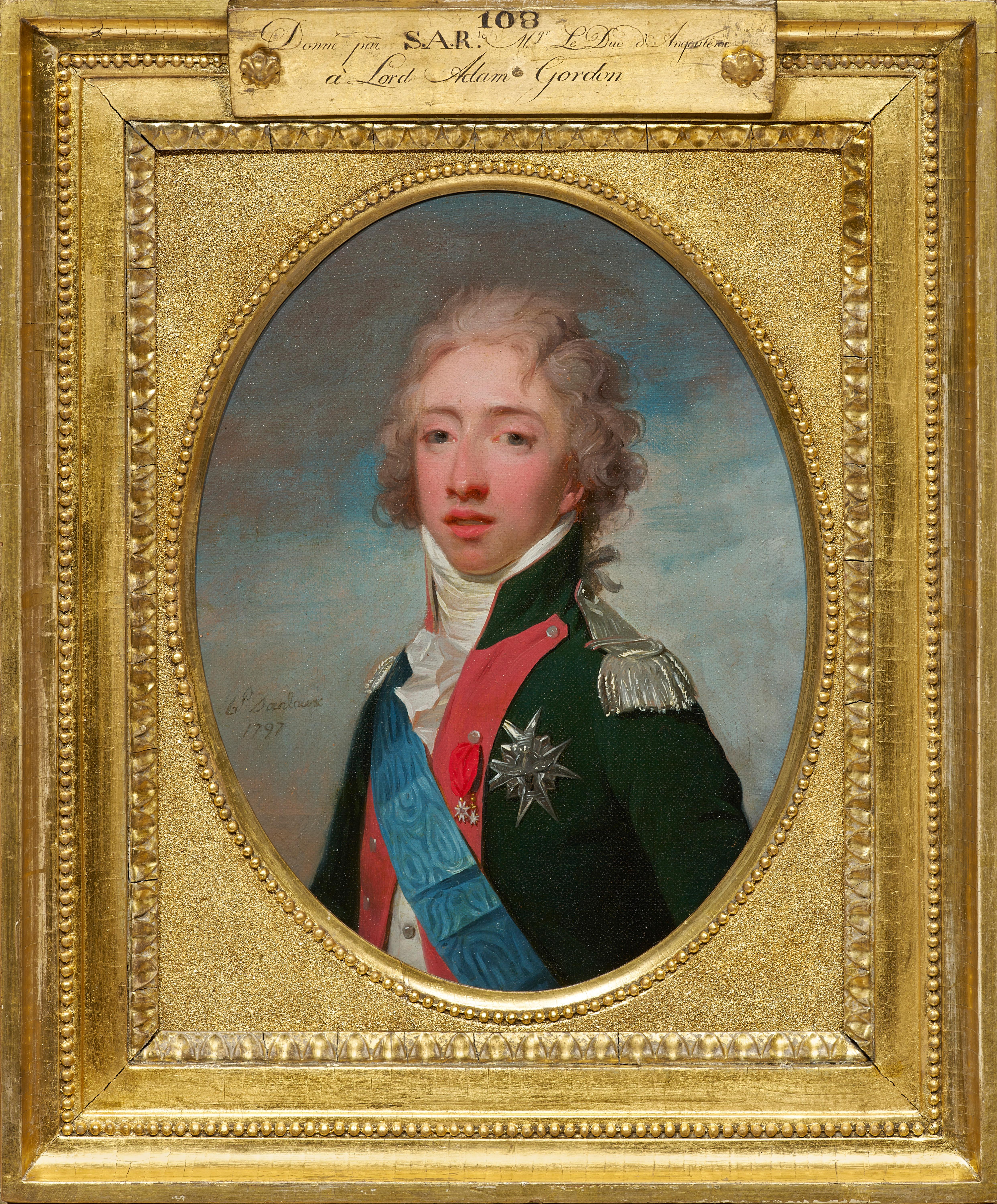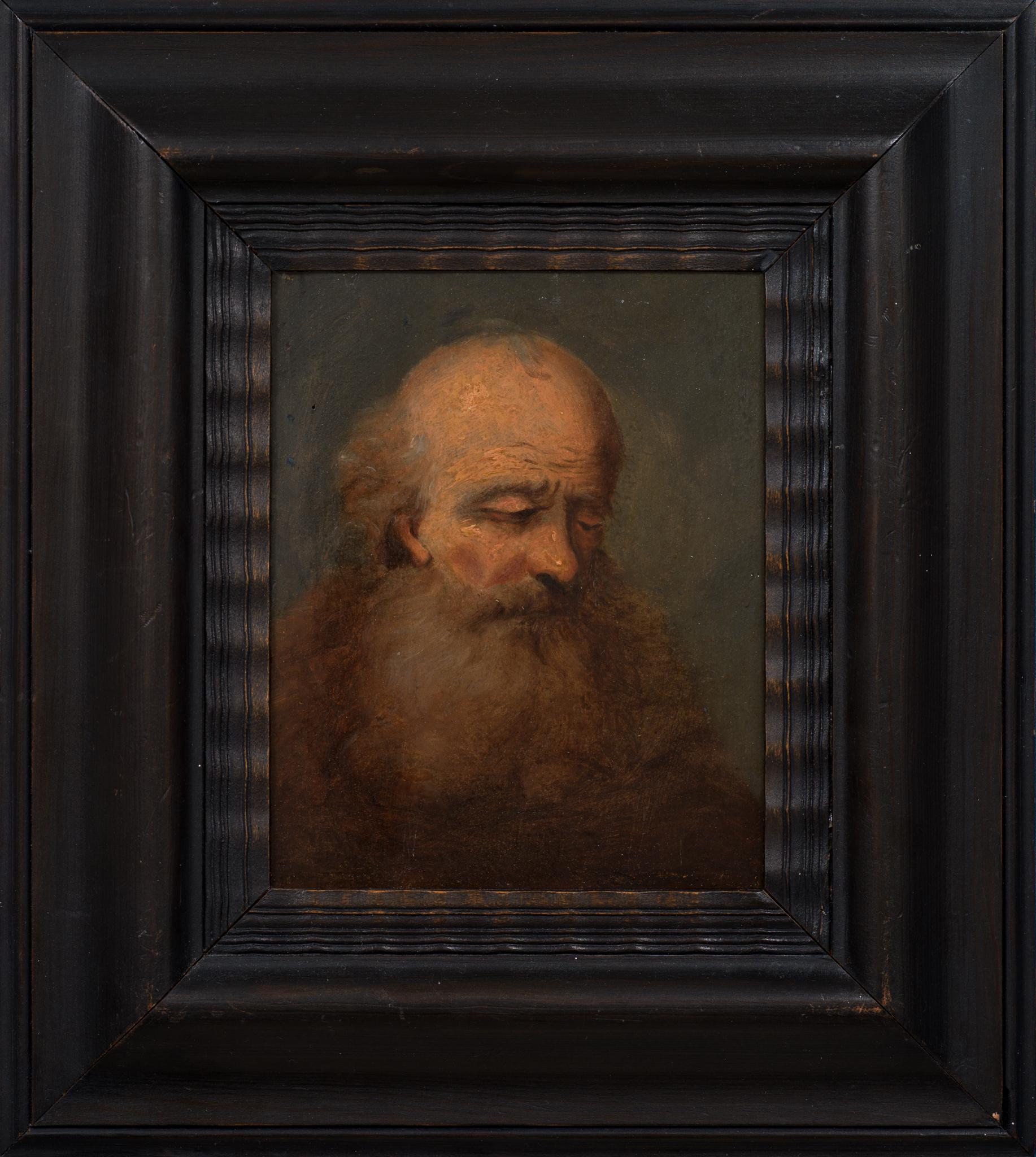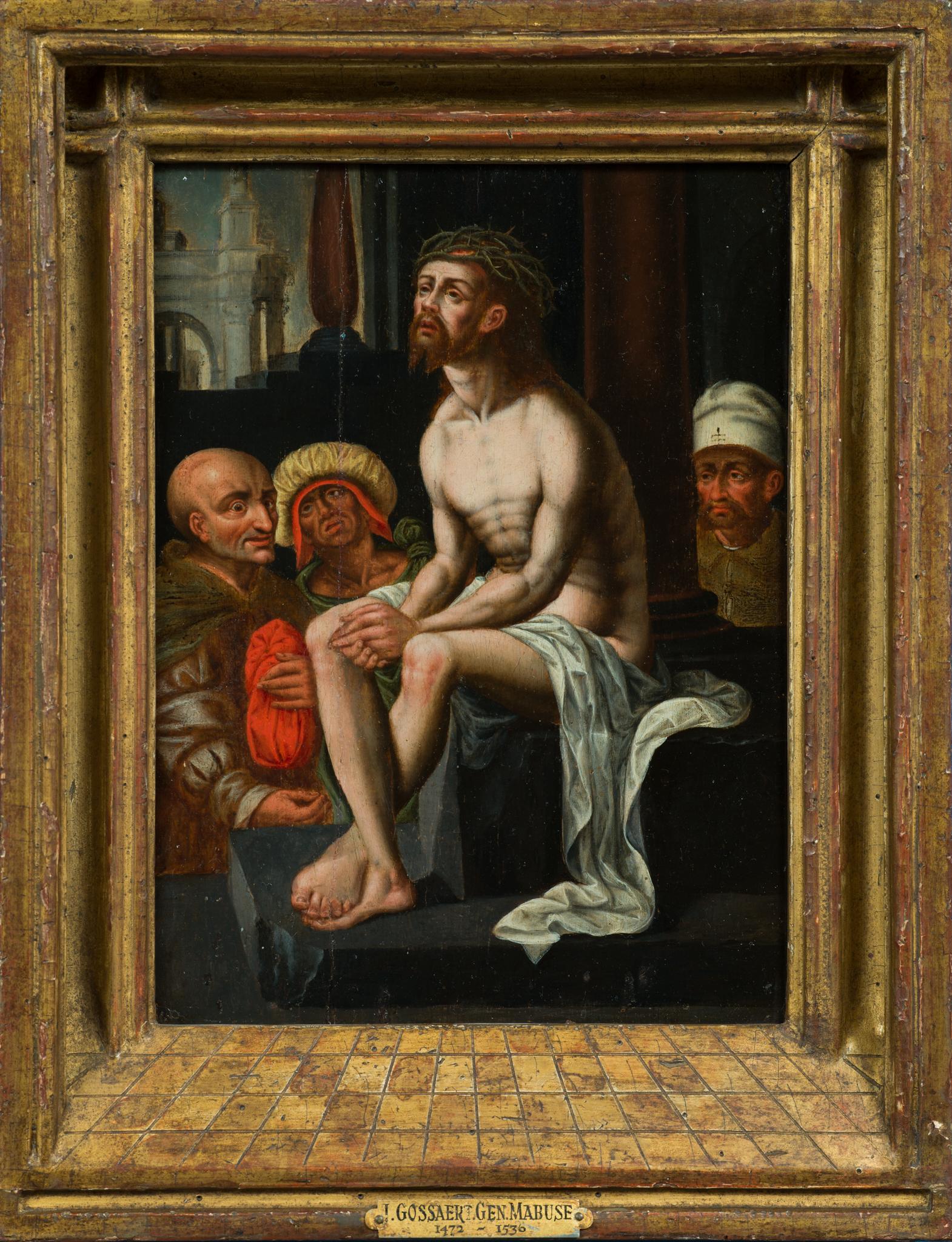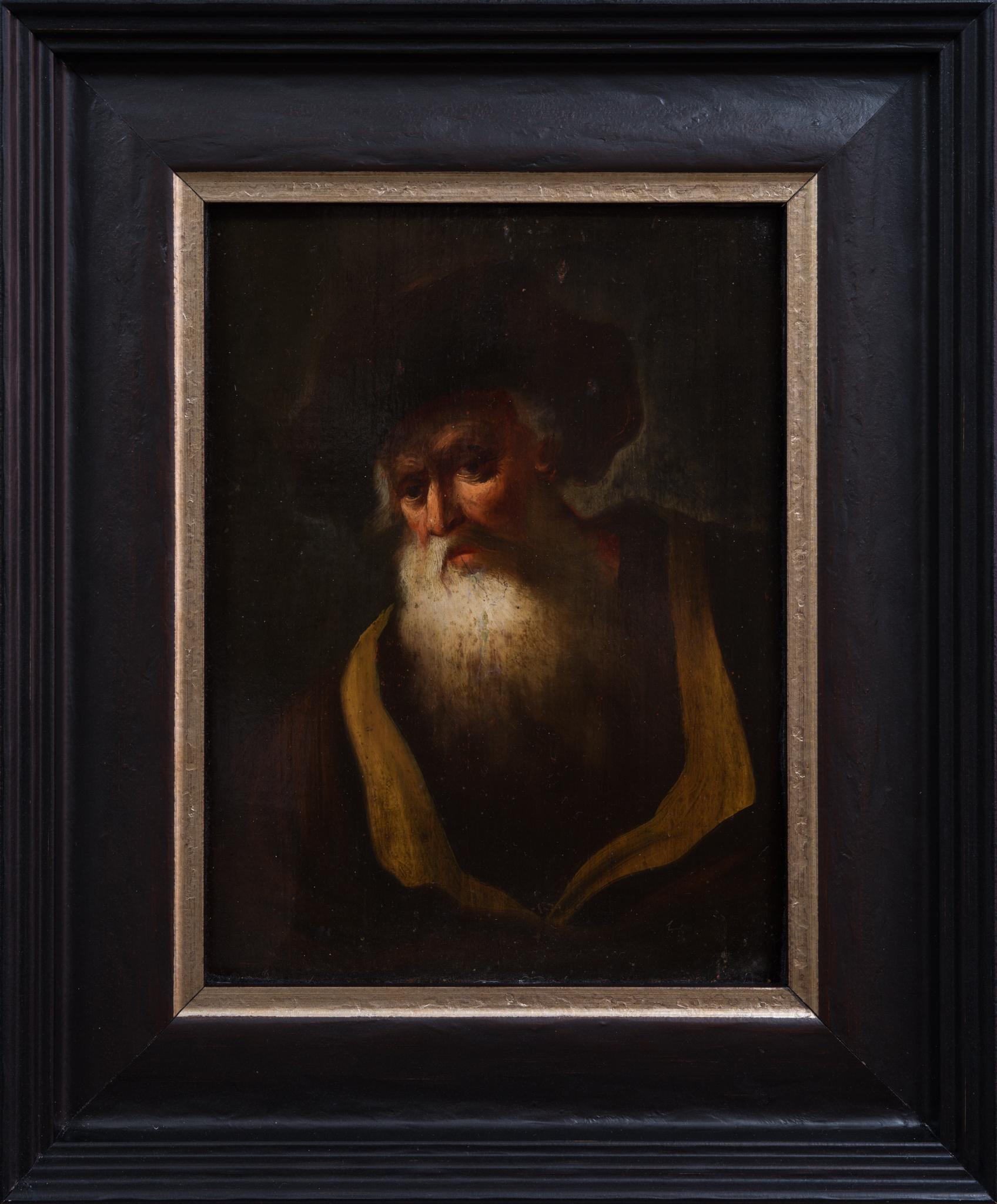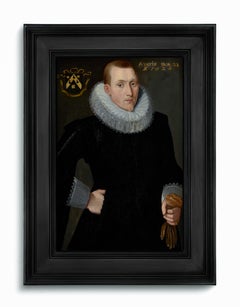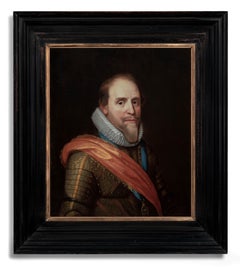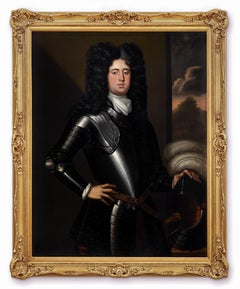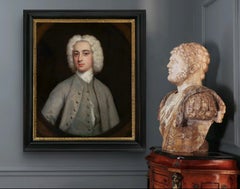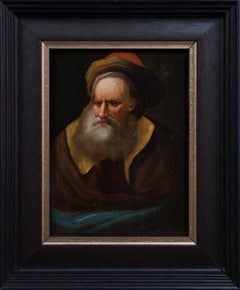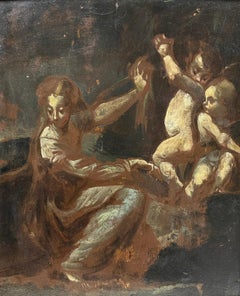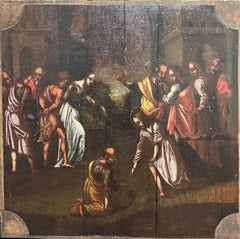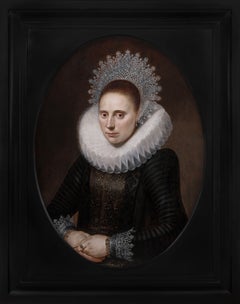
Portrait of a Lady in an Elaborate Ruff & Lace Coif c.1610-20, Dutch Old Master
View Similar Items
Want more images or videos?
Request additional images or videos from the seller
1 of 11
Cornelius van der VoortPortrait of a Lady in an Elaborate Ruff & Lace Coif c.1610-20, Dutch Old Mastercirca 1610-1620
circa 1610-1620
$25,173.47List Price
About the Item
- Creator:Cornelius van der Voort (1576 - 1624, Dutch)
- Creation Year:circa 1610-1620
- Dimensions:Height: 44.89 in (114 cm)Width: 35.83 in (91 cm)Depth: 2.37 in (6 cm)
- Medium:
- Movement & Style:
- Period:
- Condition:This painting has passed a strict quality and condition assessment by a professional conservator prior to going on sale. It can be hung and enjoyed immediately.
- Gallery Location:London, GB
- Reference Number:1stDibs: LU1199114328432
About the Seller
5.0
Vetted Professional Seller
Every seller passes strict standards for authenticity and reliability
Established in 1998
1stDibs seller since 2019
44 sales on 1stDibs
Typical response time: 6 hours
Authenticity Guarantee
In the unlikely event there’s an issue with an item’s authenticity, contact us within 1 year for a full refund. DetailsMoney-Back Guarantee
If your item is not as described, is damaged in transit, or does not arrive, contact us within 7 days for a full refund. Details24-Hour Cancellation
You have a 24-hour grace period in which to reconsider your purchase, with no questions asked.Vetted Professional Sellers
Our world-class sellers must adhere to strict standards for service and quality, maintaining the integrity of our listings.Price-Match Guarantee
If you find that a seller listed the same item for a lower price elsewhere, we’ll match it.Trusted Global Delivery
Our best-in-class carrier network provides specialized shipping options worldwide, including custom delivery.More From This Seller
View AllPortrait of a Gentleman, Doublet & White Ruff, Gloves Inscribed 1624, on panel
By Frans Pourbus the Younger
Located in London, GB
Titan Fine Art presents this exquisite oil on panel portrait depicting a handsome young gentleman in an exuberant black damask doublet. The pose, with one hand holding gloves and the other akimbo, was one that was well-established for gentleman of the upper echelons of society by the time this work was painted. The principle governing portraits at this time was the recording and defining in visual terms of the position of a sitter in society. In addition to brilliant and complex symbols of luxury, they often contained many symbolic elements too; the inclusion of gloves was often used in portraits that celebrated a betrothal as in ancient times gloves were used to seal a marriage contract.
The extraordinary costume of a black shimmering doublet, the brilliant white reticella ruff, and the cuffs edged with lace were immensely costly… this attire proclaims to every onlooker that this is a superior being. The rendering of the reticella lace ruff is exquisite and the artist has recorded the design that runs through the black damask fabric with meticulous attention to detail. The preservation of this black pigment is remarkable considering the age of the work. Black pigments are especially vulnerable to fade and wear over time partly due to environmental condition but also from unprofessional cleaning. This work is an exquisite example from the period.
According to the inscription in the upper right, the gentleman was in his 22nd year of age in 1624. The coat of arms, which is displayed without a crest, may be ‘blazoned’ in the language of heraldry, as: Sable on a Chevron between in chief two Roundels and in base a Billet [or possibly Square] Or three Martlets Sable. In plainer English this means a black (Sable) background, spanned by a gold (Or) chevron, above which are two golden solid circles (Roundels), and below which is a gold rectangle (Billet); on the chevron are three small black birds (Martlets). Martlets are a stylised form of heraldic bird, believed to be based on the swift, which are conventionally drawn with small tufts instead of feet. In Continental Europe it is also conventional for them to be drawn without beaks, as appears to be the case here. The birds in this instance also have a vaguely duck-like appearance.
Five families have been identified with very close armorial bearings to the one in our portrait. They are the (van) Houthem’s (of Brabant), the Prévinaire’s (of Flanders and Holland), and the Proveneer’s (of Liège) and it must be noted that the locations of these families also fit with the painting’s Flemish origins. However the French Grenières’s (of Île-de-France) and the Jallot’s (of Normandy) are the next closest matches and plausible matches, as Frans Pourbus had settled in Paris just a few years before our portrait was painted.
This painting has been assessed by a professional conservator prior to going on sale, and as thus, it can be hung and enjoyed immediately.
Frans Pourbus the Younger...
Category
17th Century Old Masters Portrait Paintings
Materials
Oil, Wood Panel
Dutch Old Master Portrait of Maurits, Prince of Orange-Nassau, Oil on Panel
Located in London, GB
In 1607, the Delft city council decided to commission a portrait of Stadholder Maurits of Nassau for the town hall, with Michiel van Mierevelt as the chosen artist due to the passing...
Category
17th Century Old Masters Portrait Paintings
Materials
Oil, Wood Panel
Portrait of Gentleman in Armour by Table & Helmut c.1685 Aristocratic Provenance
By Johann Kerseboom
Located in London, GB
Portrait of a Gentleman in Armour beside a Table with Helmut c.1685
Follower or circle of Johann Kerseboom (d.1708)
This exquisite Grand Manner work, presented by Titan Fine Art, wa...
Category
17th Century Old Masters Portrait Paintings
Materials
Canvas, Oil
Portrait of a Gentleman in Grey Coat & White Cravat, Oil on canvas Painting
Located in London, GB
This exquisite work, presented by Titan Fine Art, is by the notable artist Hans Hysing, who was a noteworthy painter in England; it is significant in its q...
Category
18th Century Old Masters Portrait Paintings
Materials
Canvas, Oil
Portrait of a Lady in Green Dress & Pearl Jewellery c.1660 Painting John Wright
By John Michael Wright
Located in London, GB
In this exquisite work, painted around the time of the Great Fire of London in 1666, a beautiful young woman is wearing a green dress over a white chemise and a russet-coloured scarf...
Category
17th Century Old Masters Portrait Paintings
Materials
Canvas, Oil
Portrait of a Gentleman, David Erskine, 13th Laird of Dun, Wearing Armour c.1700
Located in London, GB
The gentleman in this exquisite oil on canvas portrait, presented by Titan Fine Art, is shown with the grandiloquence characteristic of the English School of painting. He is portray...
Category
17th Century Old Masters Portrait Paintings
Materials
Oil, Canvas
You May Also Like
Portrait of William Herbert, 3rd Earl of Pembroke, Early 17th Century Portrait
Located in London, GB
English School, (circa 1600)
Portrait of William Herbert, 3rd Earl of Pembroke
Oil on panel, oval
Image size: 29¼ x 23⅞ inches
Painted wooden frame
Provenance:
176, Collection of Francis Greville, 1st Earl of Warwick.
The Trustees of the Lord Brooks’ Settlement, (removed from Warwick Castle).
Sotheby’s, London, 22nd March 1968, lot 81.
Painted onto wooden panel, this portrait shows a dark haired gentleman in profile sporting an open white shirt. On top of this garments is a richly detailed black cloak, decorated with gold thread and lined with a sumptuous crimson lining. With the red silk inside it’s all very expensive and would fall under sumptuary laws – so this is a nobleman of high degree.
It’s melancholic air conforms to the contemporary popularity of this very human condition, evident in fashionable poetry and music of the period. In comparison to our own modern prejudices, melancholy was associated with creativity in this period.
This portrait appeared in the earliest described list of pictures of Warwick castle dating to 1762. Compiled by collector and antiquary Sir William Musgrave ‘taken from the information of Lord & Lady Warwick’ (Add. MSS, 5726 fol. 3) is described;
‘8. Earl of Essex – an original by Zuccharo – seen in profile with black hair. Holding a black robe across his breast with his right hand.’
As tempting as it is to imagine that this is a portrait of Robert Devereux, the 2nd Earl Essex, we might take this with a pinch of salt. Its identification with this romantic and fatal Elizabethan might well have been an attempt to add romance to Warwick Castle’s walls. It doesn’t correspond all that well with Essex’s portraits around 1600 after his return from Cadiz. Notably, this picture was presumably hung not too far away from the castle’s two portraits of Queen Elizabeth I. The first, and undoubtedly the best, being the exquisite coronation portrait that was sold by Lord Brooke in the late 1970s and now hangs in the National Portrait Gallery. The second, described as being ‘a copy from the original at Ld Hydes’, has yet to resurface.
The portrait eventually ended up being hung in the State Bedroom of Warwick Castle.
Archival documents present one other interesting candidate. The Greville family’s earliest inventory of paintings, made in 1630 at their home Brooke House in Holborn, London, describes five portraits of identified figures. All five belonged to the courtier, politician and poet Sir Fulke Greville (1554-1628), 1st Baron Brooke, and were hung in the ‘Gallerie’ of Brooke House behind yellow curtains. One of them was described as being of ‘Lord of Pembrooke’, which is likely to have been William Herbert (1580-1630), 3rd Earl of Pembroke. William was the eldest son of Greville’s best friend’s sister Mary Sidney, and was brought up in the particularly literary and poetically orientated household which his mother had supported. Notably, the 3rd Earl was one of the figures that Shakespeare’s first folio was dedicated to in 1623.
The melancholic air to the portrait corresponds to William’s own pretensions as a learned and poetic figure. The richness of the robe in the painting, sporting golden thread and a spotted black fabric, is indicative of wealth beyond that of a simple poet or actor. The portrait’s dating to around the year 1600 might have coincided with William’s father death and his own rise to the Pembroke Earldom. This period of his life too was imbued with personal sadness, as an illicit affair with a Mary Fitton had resulted in a pregnancy and eventual banishment by Elizabeth I to Wilton after a short spell in Fleet Prison. His illegitimate son died shortly after being born. Despite being a close follower of the Earl of Essex, William had side-stepped supporting Devereux in the fatal uprising against the Queen and eventually regained favour at the court of the next monarch James I.
His linen shirt is edged with a delicate border of lace and his black cloak is lined on the inside with sumptuous scarlet and richly decorated on the outside with gold braid and a pattern of embroidered black spots.
Despite the richness of his clothes, William Herbert has been presented in a dishevelled state of semi-undress, his shirt unlaced far down his chest with the ties lying limply over his hand, indicating that he is in a state of distracted detachment. It has been suggested that the fashion for melancholy was rooted in an increase in self-consciousness and introspective reflection during the late 16th and early 17th centuries.
In contemporary literature melancholy was said to be caused by a plenitude of the melancholy humor, one of the four vital humors, which were thought to regulate the functions of the body. An abundance of the melancholia humor was associated with a heightened creativity and intellectual ability and hence melancholy was linked to the notion of genius, as reflected in the work of the Oxford scholar Robert Burton, who in his work ‘The Anatomy of Melancholy’, described the Malcontent as ‘of all others [the]… most witty, [who] causeth many times divine ravishment, and a kind of enthusiamus… which stirreth them up to be excellent Philosophers, Poets and Prophets.’ (R. Burton, The Anatomy of Melancholy, London, 1621 in R. Strong, ‘Elizabethan Malady: Melancholy in Elizabethan and Jacobean Portraits’, Apollo, LXXIX, 1964).
Melancholy was viewed as a highly fashionable affliction under Elizabeth I, and her successor James I, and a dejected demeanour was adopted by wealthy young men, often presenting themselves as scholars or despondent lovers, as reflected in the portraiture and literature from this period. Although the sitter in this portrait is, as yet, unidentified, it seems probable that he was a nobleman with literary or artistic ambitions, following in the same vain as such famous figures as the aristocratic poet and dramatist, Edward de Vere...
Category
Early 17th Century Old Masters Portrait Paintings
Materials
Oil, Wood Panel
Portrait of an Old Bearded Man
Located in Stockholm, SE
We are pleased to offer a captivating portrait, most likely painted in the late 18th century, attributed to an artist within the circle of Christian Wilhelm Ernst Dietrich. This oil ...
Category
Late 18th Century Old Masters Portrait Paintings
Materials
Oil, Wood Panel
Angelic Cherubs with Classical Figure in Wilderness Finely Painted Preparatory
Located in Cirencester, Gloucestershire
Figure with Cherubim in Wilderness
Italian School, 17th century
oil painting on wood panel
framed 13 x 11 inches
condition: overall for its age very good, though the work is most likely a preparatory...
Category
17th Century Old Masters Figurative Paintings
Materials
Oil, Wood Panel
Large 17th Century Dutch Old Master Oil Painting on Wood Panel Biblical Scene
Located in Cirencester, Gloucestershire
Biblical Figures, Large Gathering around Christ?
Dutch Old Master, early 17th century
oil painting on wood panel, stuck on velvet backing board
velvet board: 27 x 29 inches
board: 25.5 x 26 inches
provenance: private collection, France
condition: good and sound condition, obvious old panel...
Category
Early 17th Century Old Masters Figurative Paintings
Materials
Oil, Wood Panel
$3,282 Sale Price
30% Off
17th Century Portrait of Reverend and Reformer John Calvin
Located in Stockholm, SE
A Rare 17th-Century Portrait of John Calvin
This small interesting portrait, of John Calvin (1509–1564) offers a rare glimpse into the enduring legacy of the French-Swiss reformer. P...
Category
17th Century Old Masters Portrait Paintings
Materials
Oil, Wood Panel
Portrait of a Gentleman, 17th Century Dutch Old Masters Oil
Located in London, GB
Circle of Gerard van Honthorst
1592 - 1656
Portrait of a Gentleman
Oil on wooden panel
Image size: 29 x 23 inches
Contemporary gilt frame
Gerard van Honthorst was a Dutch Golden Age...
Category
17th Century Old Masters Portrait Paintings
Materials
Oil, Wood Panel
Recently Viewed
View AllMore Ways To Browse
Same Old
Italian Old World
Antique Old World Art
Military Portrait
Old Antique Keys
Spain Old Masters
Old Master Flemish
Antique Portrait Jewelry
Antique Sorter
European Antique Auction
Thomas Downing Artist
Portrait Pendant
Womens Belts
Antique Meter
Oil Portrait Spanish Woman
Andor Ruff
Train Skirt
Antique French Dictionary
